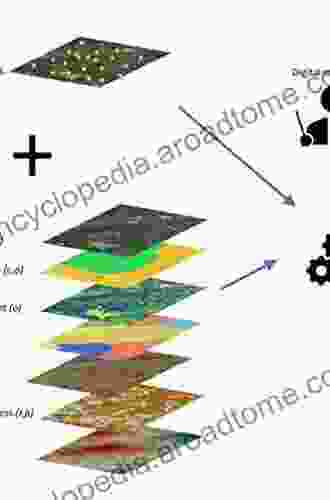Unveiling the Mysteries of Inverse Problems in Partial Differential Equations: A Comprehensive Guide

Partial differential equations (PDEs) are powerful mathematical tools used to model a wide range of physical phenomena, from the flow of fluids to the propagation of waves. However, obtaining the data needed to solve these equations often poses a significant challenge. This is where inverse problems come into play.
Inverse problems for PDEs involve using limited information about a solution to determine its unknown parameters or boundary conditions. These problems arise in various applications, such as medical imaging, geophysical exploration, and industrial process control.
4 out of 5
| Language | : | English |
| File size | : | 8903 KB |
| Screen Reader | : | Supported |
| Print length | : | 421 pages |
In this article, we delve into the fascinating world of inverse problems for PDEs. We explore their theoretical foundations, numerical methods, and real-world applications.
Theoretical Foundations
The mathematical framework of inverse problems is built upon the theory of ill-posedness. Unlike well-posed problems, which have a unique solution that depends continuously on the input data, ill-posed problems may have multiple solutions or no solution at all. Inverse problems for PDEs typically fall into this category.
To address the ill-posedness of inverse problems, regularization techniques are employed. Regularization introduces additional constraints to stabilize the solution and make it more meaningful. Common regularization methods include Tikhonov regularization, truncated singular value decomposition, and total variation regularization.
Numerical Methods
Solving inverse problems for PDEs numerically requires efficient algorithms that can handle large and complex datasets. A variety of numerical methods have been developed for this purpose, including:
- Iterative methods: These methods iteratively update the solution based on the discrepancy between the observed data and the estimated solution. Examples include the conjugate gradient method, the Gauss-Newton method, and the Levenberg-Marquardt method.
- Projection methods: These methods project the problem onto a lower-dimensional subspace and solve the reduced problem iteratively. Examples include the Lanczos method and the subspace iteration method.
- Bayesian methods: These methods incorporate prior knowledge about the solution into the inversion process using Bayes' theorem. Examples include the Markov chain Monte Carlo method and the variational Bayes method.
The choice of numerical method depends on the specific problem being solved, the available data, and the desired accuracy.
Real-World Applications
Inverse problems for PDEs find application in a diverse range of fields, including:
- Medical imaging: Reconstructing images from medical imaging modalities, such as computed tomography (CT),magnetic resonance imaging (MRI),and ultrasound.
- Geophysical exploration: Determining the properties of subsurface structures, such as oil reservoirs and geological formations, using seismic data.
- Industrial process control: Monitoring and optimizing industrial processes, such as chemical reactors and manufacturing lines, based on sensor measurements.
These applications demonstrate the practical importance of inverse problems for PDEs in various scientific and engineering disciplines.
Book Overview
If you want to delve deeper into the topic of inverse problems for PDEs, we highly recommend the book "Inverse Problems for Partial Differential Equations: Applied Mathematical Sciences" by Heinz W. Engl, Martin Hanke, and Andreas Neubauer.
This acclaimed book provides a comprehensive and accessible to the field. It covers the theoretical foundations, numerical methods, and applications of inverse problems for PDEs in great detail.
Whether you are a student, researcher, or practitioner working in inverse problems, this book is an invaluable resource that will enhance your understanding and knowledge.
Inverse problems for partial differential equations offer a powerful framework for extracting valuable information from incomplete or indirect observations. Through advanced mathematical techniques and numerical algorithms, these problems enable us to gain insights into a wide range of physical phenomena and practical applications.
We encourage you to explore this fascinating field further by delving into the resources and references provided throughout this article. And for a comprehensive understanding, we highly recommend the book "Inverse Problems for Partial Differential Equations: Applied Mathematical Sciences."
4 out of 5
| Language | : | English |
| File size | : | 8903 KB |
| Screen Reader | : | Supported |
| Print length | : | 421 pages |
Do you want to contribute by writing guest posts on this blog?
Please contact us and send us a resume of previous articles that you have written.
 Book
Book Novel
Novel Page
Page Chapter
Chapter Text
Text Story
Story Genre
Genre Reader
Reader Library
Library Paperback
Paperback E-book
E-book Magazine
Magazine Newspaper
Newspaper Paragraph
Paragraph Sentence
Sentence Bookmark
Bookmark Shelf
Shelf Glossary
Glossary Bibliography
Bibliography Foreword
Foreword Preface
Preface Synopsis
Synopsis Annotation
Annotation Footnote
Footnote Manuscript
Manuscript Scroll
Scroll Codex
Codex Tome
Tome Bestseller
Bestseller Classics
Classics Library card
Library card Narrative
Narrative Biography
Biography Autobiography
Autobiography Memoir
Memoir Reference
Reference Encyclopedia
Encyclopedia Ganesh Balasubramanian
Ganesh Balasubramanian Barbara W Ellis
Barbara W Ellis David Ovason
David Ovason Joshua Clark
Joshua Clark James Storey
James Storey Dr Bob Rothbard
Dr Bob Rothbard Paul John Hausleben
Paul John Hausleben Amy Jin
Amy Jin 1st Ed 2016 Edition Kindle Edition
1st Ed 2016 Edition Kindle Edition Edward Dmytryk
Edward Dmytryk Johanna Rothman
Johanna Rothman Loretta J Gilbert
Loretta J Gilbert Elsie Callender
Elsie Callender Britt Malka
Britt Malka Louise Mary Muttitt
Louise Mary Muttitt Shereen Laplantz
Shereen Laplantz Priscilla Johnson Mcmillan
Priscilla Johnson Mcmillan Emily White
Emily White Todd Glass
Todd Glass Catholic Way Publishing
Catholic Way Publishing
Light bulbAdvertise smarter! Our strategic ad space ensures maximum exposure. Reserve your spot today!

 Gabriel Garcia MarquezUnlock the Secrets of Home Plumbing: Your Comprehensive Guide to Leak-Proof...
Gabriel Garcia MarquezUnlock the Secrets of Home Plumbing: Your Comprehensive Guide to Leak-Proof... Marc FosterFollow ·2.9k
Marc FosterFollow ·2.9k Floyd PowellFollow ·17.2k
Floyd PowellFollow ·17.2k Russell MitchellFollow ·8.6k
Russell MitchellFollow ·8.6k Dave SimmonsFollow ·11k
Dave SimmonsFollow ·11k Francisco CoxFollow ·2.4k
Francisco CoxFollow ·2.4k Tony CarterFollow ·14.8k
Tony CarterFollow ·14.8k Paulo CoelhoFollow ·10.7k
Paulo CoelhoFollow ·10.7k Hugo CoxFollow ·2.3k
Hugo CoxFollow ·2.3k

 Desmond Foster
Desmond FosterBreak Free from the Obesity Pattern: A Revolutionary...
Obesity is a global pandemic affecting...

 Jared Nelson
Jared NelsonRobot World Cup XXIII: The Ultimate Guide to Advanced...
The Robot World Cup XXIII: Lecture Notes in...

 Charlie Scott
Charlie ScottFirst International Conference TMM CH 2024 Athens...
Prepare for...

 Finn Cox
Finn CoxRe-Capturing the Conversation about Hearing Loss and...
Challenging...

 Camden Mitchell
Camden MitchellJourney into the Realm of Digital Systems: An Immersive...
In the ever-evolving technological...

 Javier Bell
Javier BellUnveiling the Toxins Behind Multiple Sclerosis: A...
Multiple sclerosis...
4 out of 5
| Language | : | English |
| File size | : | 8903 KB |
| Screen Reader | : | Supported |
| Print length | : | 421 pages |









